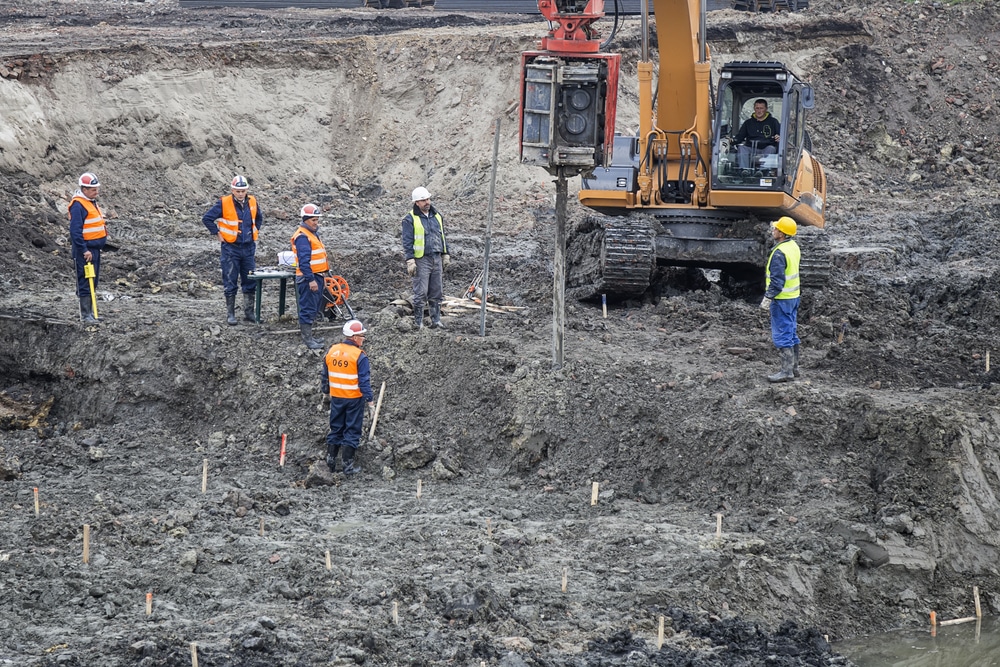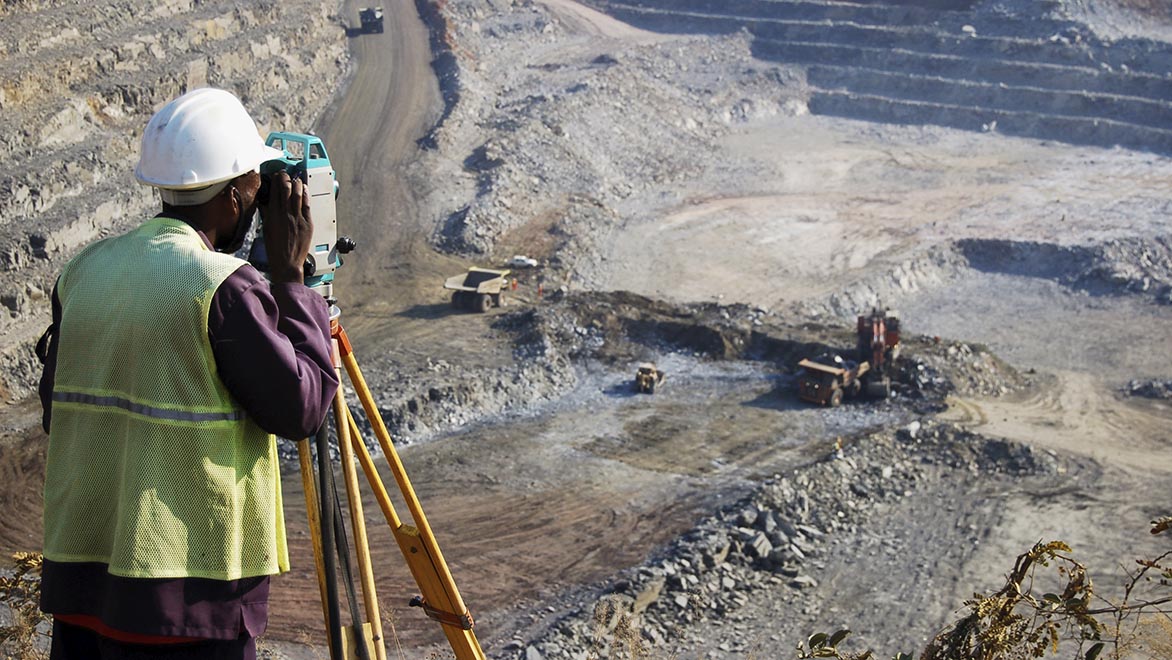Tailings Engineer: Crucial Proficiency for Sustainable Waste Monitoring in Mining
Discovering the Cutting-edge Methods and Technologies Forming the Future of the Geotechnical Market for Sustainable Design Solutions
The geotechnical industry is going through a transformative change, driven by ingenious techniques and modern technologies that stress lasting engineering options. Advanced dirt stabilization methods, using clever products, and the application of information analytics are redefining how we approach infrastructure challenges. As these improvements advertise environmental stewardship, they additionally increase essential concerns concerning their sensible implementation and long-term effectiveness. Understanding the interplay between these innovations and their potential to revolutionize the field welcomes more expedition right into the future of lasting design methods.
Advanced Soil Stabilization Methods
Soil stabilization is an essential procedure in geotechnical design, aimed at improving the physical residential properties of dirt to boost its load-bearing ability and toughness. Advanced soil stabilization techniques play a crucial function in dealing with challenges related to unstable or weak dirts, consequently allowing safe and efficient construction techniques.
Among the noticeable techniques, chemical stabilization entails the use of additives such as lime, concrete, or fly ash, which respond with soil fragments to form an extra cohesive mass. This method is specifically efficient in boosting the stamina and moisture resistance of large clay soils. Mechanical stabilization, on the various other hand, involves the physical modification of dirt homes via compaction or the incorporation of granular products, bring about improved density and security.
An additional innovative technique is using geosynthetics, which provide support and lower soil erosion while improving water drainage. Strategies like soil mixing and deep dirt stabilization are likewise getting grip, enabling in-situ treatment of bothersome dirts. Collectively, these sophisticated approaches not only improve the performance of dirt frameworks but also add to sustainable design techniques by reducing the requirement for substantial excavation and product transport.
Smart Materials in Geotechnics
Development is at the leading edge of geotechnical design, specifically with the consolidation of wise products that enhance the performance and capability of dirt frameworks. Smart products, such as shape memory alloys, piezoelectric materials, and self-healing polymers, are transforming the method designers come close to dirt stablizing and framework longevity (engineer of record). These materials can adapt to transforming ecological problems, react to stress, and also fix themselves, significantly enhancing the durability of geotechnical systems
For example, piezoelectric products can create electric charges in response to mechanical stress, supplying prospective for real-time monitoring of dirt conditions and architectural honesty. Self-healing products can autonomously repair cracks and problems, lowering upkeep costs and extending the life expectancy of geotechnical assets. The integration of these smart materials not only enhances the mechanical buildings of dirt yet also adds to lasting design techniques by lessening resource usage and ecological effect.
As the geotechnical market remains to evolve, the fostering of clever products will certainly play a vital role in creating ingenious solutions, ensuring that frameworks are not only robust however also versatile to future challenges. This transformative technique is positioned to redefine the standards of security and efficiency in geotechnical design.
Data Analytics for Framework
The integration of wise products in geotechnical design has paved the method for innovative approaches, specifically in the realm of information analytics for facilities. This cutting-edge method leverages considerable data collection read more and analytical methods to boost decision-making processes throughout the facilities lifecycle. By making use of sensing units embedded in smart materials, engineers can continuously keep an eye on essential parameters such as dirt security, dampness degrees, and architectural stability.
Data analytics enables the transformation of raw data right into workable insights, enabling anticipating maintenance and improved risk monitoring. Advanced formulas and artificial intelligence methods help with the identification of abnormalities and patterns, which can maximize and educate timely interventions source allocation. Additionally, integrating geographical info systems (GIS) improves spatial analysis, further enriching the decision-making framework.
As framework projects expand in complexity, the reliance on data analytics becomes significantly necessary. It promotes a positive approach, lessening the probability of failings and making certain the long life and sustainability of frameworks. By utilizing the power of data analytics, the geotechnical sector is placed to not just boost present practices but additionally leader ingenious options for future facilities challenges. This harmony of innovation and engineering concepts will specify the future of sustainable framework growth.

Sustainable Ground Improvement Methods
Different lasting ground enhancement approaches are becoming important solutions to address the difficulties of geotechnical engineering while lessening ecological influence. These approaches not just enhance soil efficiency but also promote ecological stewardship by decreasing reliance on standard, a lot more intrusive strategies.

One more ingenious method is the application of geosynthetics, that includes biodegradable materials that enhance dirt while promoting water drainage and disintegration control - geotechnical engineers. This lowers the demand for hefty equipment and reduces site disruption, thus preserving regional communities
In addition, strategies such as dynamic compaction and vibro-replacement have advanced to include lasting methods, integrating recycled materials and reducing carbon footprints. These approaches exemplify the sector's shift towards even more ecologically liable services, guaranteeing that ground renovation not just fulfills design requirements but likewise contributes favorably to the surrounding environment.
Technologies in Environmental Tracking
In the last few years, developments in environmental surveillance have actually considerably boosted the ability to examine and take care of geotechnical projects with minimal environmental disturbance. Innovative innovations, such as remote picking up, Net of Things (IoT) gadgets, and real-time data analytics, are changing how environmental effects are gauged and alleviated.
Remote picking up technologies, including satellite images and air-borne LiDAR, help with the quick assessment of land usage changes and ecological conditions - engineer of record. These devices enable continual surveillance of sites, allowing engineers to determine possible issues prior to they intensify. Additionally, IoT tools, furnished with sensing units for specifications like dirt wetness, gas, and temperature level emissions, provide live data streams that improve the understanding of site-specific ecological variables
Real-time information analytics better refine decision-making processes by integrating data Recommended Site from numerous resources, enabling for positive management techniques. This alternative method not only makes sure compliance with environmental policies however also promotes lasting techniques within the geotechnical industry.
As these innovations remain to develop, they hold the potential to link the gap in between engineering purposes and environmental stewardship, fostering a much more lasting future for geotechnical jobs worldwide.
Conclusion
Advanced dirt stablizing approaches, the integration of wise materials, and the application of data analytics jointly improve the strength and efficiency of facilities. These innovations not just address modern design obstacles but also pave the method for a much more lasting future in geotechnical methods.
Strategies like soil mixing and deep dirt stabilization are also getting traction, enabling for in-situ treatment of problematic dirts. Jointly, these innovative techniques not just enhance the performance of soil structures however additionally add to sustainable engineering techniques by minimizing the demand for considerable excavation and product transport.
